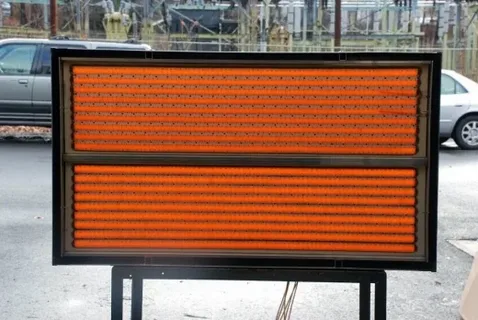In recent years, Radiant Heating Panels have emerged as a compelling alternative to traditional heating methods. These innovative panels offer a blend of efficiency, comfort, and modern design that sets them apart from conventional systems. Unlike traditional heaters, which often rely on air circulation to distribute warmth, Radiant Heating Panels use infrared technology to heat objects and people directly. This method promises uniform heat distribution and can potentially save energy. As homeowners seek to make informed decisions, understanding the nuances between Radiant Heat Panels and traditional heating systems becomes crucial. By examining various factors such as energy efficiency, installation processes, and maintenance needs, one can better appreciate each heating method’s distinct advantages.
Energy Efficiency Assessment
Regarding energy consumption, Radiant Heating Panels often surpass traditional heating systems in efficiency. Traditional heaters typically operate through forced air or convection, which can result in considerable energy losses. In contrast, radiant panels utilise infrared technology to transfer heat directly to objects and individuals within a space. This method reduces energy wastage by avoiding heating air, which often escapes or rises to less-used areas.
Over time, this direct heating approach can lead to noticeable cost savings. Additionally, radiant panels can be paired with renewable energy sources, enhancing their efficiency and sustainability. The overall reduction in energy usage benefits homeowners financially and contributes to a lower environmental impact.
Complexity of Installation
The installation process of Radiant Heating Panels is notably less invasive than traditional heating systems. Conventional systems often require complex setups involving extensive ductwork, piping, or radiators, which can be labour-intensive and time-consuming. Radiant Heating Panels, however, can be installed relatively easily, sometimes even as a DIY project. This streamlined process minimises disruption to the household and allows for more flexible placement within various rooms.
The straightforward installation can also reduce labour costs, making it an attractive option for homeowners. By offering a simpler and more adaptable installation method, Radiant Heating Panels present a practical alternative to the more cumbersome and invasive procedures associated with traditional heating systems.
Heat Distribution Methods
Traditional heating methods, such as radiators and forced-air systems, often struggle with achieving consistent temperature distribution. Warm air rises towards the ceiling, leaving lower parts of the room cooler. This can result in uneven heating and create uncomfortable cold spots. In contrast, Radiant Heating Panels use infrared technology to directly warm objects and surfaces.
This method ensures that heat is distributed evenly across the room, eliminating the stratification of warm and cool air layers. Consequently, occupants experience a more stable and comfortable indoor environment. Direct heat transfer from the panels to objects and people within the space can significantly enhance overall comfort.
Space and Layout Considerations
Traditional heating units, such as radiators or baseboards, can occupy significant space within a room, often hindering furniture arrangement and interior design plans. Radiant Heating Panels offer a more versatile solution, as they can be discreetly mounted on ceilings or walls, freeing up valuable floor space. Their slim profile and unobtrusive design allow greater room layout and decor flexibility. This feature is particularly advantageous in compact living spaces, where every square metre counts.
Additionally, radiant panels’ aesthetic appeal can enhance a room’s overall look, blending seamlessly with modern interiors. Their minimalistic design ensures that they do not become a focal point, unlike bulkier traditional heating units, thus maintaining the intended visual flow of the space.
Maintenance Requirements for Radiant Heat Panels
Radiant Heat Panels demand significantly less upkeep compared to traditional heating systems. Traditional heaters, with their extensive ductwork, filters, and moving parts, require regular inspections and servicing to maintain performance and safety standards. Radiant panels, on the other hand, operate with minimal mechanical components, which translates to fewer potential issues over time. This reduced complexity lowers maintenance costs and diminishes the likelihood of unexpected breakdowns.
Moreover, the simplicity of radiant panels can make troubleshooting and repairs more straightforward, saving both time and money. Consequently, the lower maintenance requirements of Radiant Heating Panels contribute to their appeal as a practical and efficient heating solution.
Environmental Footprint
Traditional heating systems often depend on fossil fuels, contributing to higher greenhouse gas emissions. In contrast, Radiant Heating Panels offer a more environmentally sustainable option, particularly when powered by renewable energy sources. These panels operate with greater efficiency, reducing overall energy consumption. By minimising the reliance on fossil fuels, Radiant Heating Panels help lower a household’s carbon footprint.
Furthermore, their efficient heat distribution means less energy is wasted, making them a compelling choice for eco-conscious homeowners. The combination of reduced energy usage and the potential for integration with green energy solutions positions Radiant Heating Panels as a more environmentally friendly heating option.
Initial Financial Investment
Initial costs for heating systems can differ substantially. Traditional heating setups, particularly in older properties, often entail significant expenses due to the necessity for extensive ductwork or plumbing alterations. In contrast, while Radiant Heating Panels may sometimes present a higher initial outlay, they frequently result in savings through reduced installation expenses and enhanced long-term energy efficiency.
The streamlined installation process associated with Radiant Heating Panels can save costs by minimising labour requirements. Over time, the energy efficiency of Radiant Heating Panels can lead to lower utility bills, offsetting the initial expenditure. Careful consideration of these financial aspects is crucial for those mindful of their budgets when selecting a heating solution.
Health and Comfort Impact
Radiant heating systems offer a compelling alternative to traditional heating methods, particularly for those seeking improved indoor air quality and enhanced comfort. Unlike forced-air systems that circulate dust, allergens, and other particulates, radiant panels heat objects directly, minimizing the disturbance of indoor air.
Improved Indoor Air Quality
By eliminating the need for fans and blowers, radiant heating panels significantly reduce the circulation of dust, pollen, pet dander, and other airborne allergens. This is particularly beneficial for individuals with respiratory conditions like asthma, allergies, or sensitivities to dust. Cleaner air can lead to improved respiratory health and a more comfortable living environment.
Consistent and Even Heat Distribution
Radiant panels provide a steady and even heat distribution throughout the space, eliminating the uneven temperature fluctuations and cold spots often associated with forced-air systems. This consistent warmth creates a more comfortable and enjoyable living environment for all occupants.
Reduced Drafts and Cold Spots
The absence of air movement in radiant heating systems eliminates the drafts and cold spots commonly experienced with forced-air systems. This creates a more comfortable and evenly heated space, reducing discomfort and energy consumption.
Control and Automation Features
Modern living often requires integrating smart technology, where Radiant Heating Panels demonstrate significant advantages. These systems can easily be equipped with advanced controls that allow for precise temperature management, offering remote adjustments and automated scheduling options. Users can set up customised heating patterns to match their daily routines, enhancing comfort and potentially reducing energy consumption. While traditional heating systems can also incorporate smart features, they often do so with increased complexity and expense.
The streamlined design of Radiant Heating Panels lends to simpler and more effective integration with smart home ecosystems, providing a more user-friendly experience. The ability to control heating remotely through smartphone apps or home automation systems adds a layer of convenience and efficiency that aligns well with contemporary lifestyles.
Safety Aspects
Radiant Heating Panels provide a safer heating option as they operate without exposed heating elements or combustion processes, reducing the risk of burns, gas leaks, and fires. Unlike traditional heating systems, which may include boilers or open flames that pose significant hazards, radiant panels use infrared technology to emit heat safely.
This feature is particularly beneficial for homes with young children, pets, or elderly residents, as the panels remain cool to the touch and do not circulate potentially harmful airborne particles. Additionally, the absence of moving parts in Radiant Heating Panels minimises the risk of mechanical failure, contributing to a safer and more reliable heating system.
Suitability across Different Properties
Radiant Heating Panels exhibit remarkable versatility when applied to different property types. Their slim and unobtrusive design allows them to easily incorporate into various architectural styles, from contemporary urban flats to historic country houses. Unlike traditional heating systems, which often necessitate substantial modifications such as installing ductwork or radiators, radiant panels can be installed with minimal disruption to existing structures. This makes them an ideal choice for renovations or retrofitting projects where preserving the integrity of the building is paramount.
Moreover, Radiant Heating Panels’ discreet nature means they do not intrude on a room’s aesthetic appeal, allowing for a harmonious blend with any interior design. Their ability to be mounted on walls or ceilings further enhances their suitability for properties with limited floor space, making them a practical solution for compact living environments.
In multi-occupancy buildings, such as flats or office blocks, radiant panels offer the added advantage of individualised heating zones. Each unit or room can be independently controlled, providing tailored comfort without affecting neighbouring areas. This level of customisation is difficult to achieve with traditional heating systems, which often require a more centralised approach.
Conclusion
In conclusion, Radiant Heat Panels offer a compelling alternative to traditional heating methods, presenting a compelling blend of efficiency, comfort, and modern design. While traditional systems often rely on air circulation, radiant panels utilize infrared technology to directly heat objects and individuals, resulting in more even heat distribution and reduced energy waste. This translates to potential cost savings and a lower environmental impact. Furthermore, radiant panels are generally easier to install and require less maintenance compared to traditional systems. Their discreet design, enhanced comfort, and compatibility with smart home technology further solidify their position as a modern and appealing heating solution. By carefully considering the factors outlined above, homeowners can make informed decisions about the most suitable heating system for their individual needs and preferences.
Frequently Asked Questions
Can Radiant Heat Panels be used in all types of rooms?
Yes, Radiant Heat Panels are versatile and can be used in various rooms, including living rooms, bedrooms, kitchens, and even bathrooms.
Are Radiant Heating Panels suitable for all climates?
While effective in a wide range of climates, Radiant Heating Panels may be more suitable for colder regions due to their ability to provide consistent and comfortable warmth even in extreme conditions.
Can I install Radiant Heating Panels myself?
Some simpler systems can be installed as DIY projects, but it is generally recommended to consult with a qualified installer for professional installation and ensure proper integration with the electrical system.
What is the lifespan of a radiant heat panel?
With proper installation and maintenance, Radiant Heating Panels can have a lifespan of 20 years or more.
How do I clean a radiant heat panel?
Most Radiant Heating Panels can be easily cleaned with a soft cloth and a mild cleaning solution. Avoid using harsh chemicals or abrasive materials.



